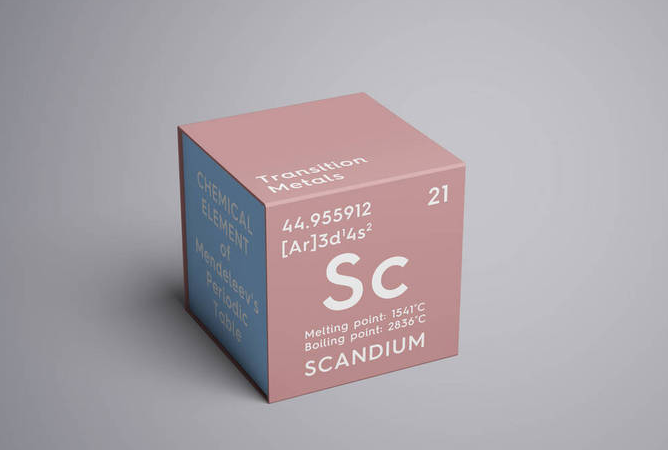Extraction methods of scandium
For a considerable period of time after its discovery, the use of scandium was not demonstrated due to its difficulty in production. With the increasing improvement of rare earth element separation methods, there is now a mature process flow for purifying scandium compounds. Because scandium has the weakest alkalinity compared to yttrium and lanthanide elements, hydroxides contain rare earth element mixed minerals containing scandium. After treatment, scandium hydroxide will first precipitate when transferred to the solution and treated with ammonia. Therefore, the use of graded precipitation method can easily separate it from rare earth elements. Another method is to use the hierarchical decomposition of nitrate for separation, as nitric acid is the easiest to decompose and can achieve the purpose of separating scandium. In addition, the comprehensive recovery of accompanying scandium in uranium, tungsten, tin and other mineral deposits is also an important source of scandium.
After obtaining a pure scandium compound, it is converted into ScCl3 and co melted with KCI and LiCI. The molten zinc is used as the cathode for electrolysis, causing scandium to precipitate on the zinc electrode. Then, the zinc is evaporated to obtain metallic scandium. This is a light silver white metal, and its chemical properties are also very active. It can react with hot water to generate hydrogen.
Scandium has the properties of low relative density (almost equal to aluminum) and high melting point. Nitriding (SCN) has a melting point of 2900 ℃ and high conductivity, making it widely used in the electronics and radio industries. Scandium is one of the materials for thermonuclear reactors. Scandium can stimulate the phosphorescence of ethane and enhance the blue light of magnesium oxide. Compared with high-pressure mercury lamps, sharp sodium lamps have advantages such as high light efficiency and positive light color, making them suitable for filming movies and plaza lighting.
Scandium can be used as an additive for nickel chromium alloys in the metallurgical industry to produce high heat resistant alloys. Scandium is an important raw material for submarine detection plates. The combustion heat of scandium is up to 5000 ℃, which can be used in space technology. Sc can be used for radioactive tracking for various purposes. Scandium is sometimes used in medicine.
Post time: May-16-2023
